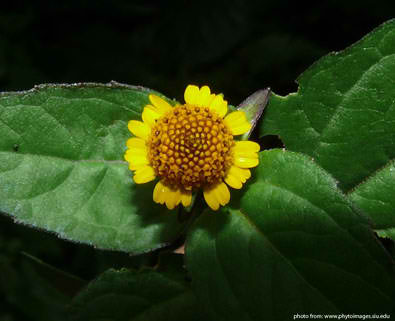Traditional medicine is being practiced as part of the culture of many indigenous groups in the Philippines. As defined by the World Health Organization, traditional medicine is the sum total of the knowledge, skills, and practices based on the theories, beliefs, and experiences indigenous to different cultures, whether explicable or not, used in the maintenance of health as well as in the prevention, diagnosis, improvement or treatment of physical and mental illness.

In this regard, a group of researchers from the Mindanao State University led by Ms. Maria Luisa Cabrera studied ethno-pharmacological plants used by indigenous people communities in the SOCSARGEN region. The topic was discussed by Ms. Cabrera in a seminar series held at the Bureau of Agricultural Research (BAR).
According to Ms. Cabrera, traditional medicine continues to persist especially among IP communities because of their belief that there is spirituality in the efficacy of floral resources as medicine. “Aside from that, it is because of easier accessibility to and availability of resources, high cost of medicines, and limited access to health care,” she added.
Supported by BAR, the study aimed at documenting the ethno-medicinal knowledge, practices, and resource assessment in the three IP groups, Blaan’s, Tboli’s, and Obo’s in SOCSARGEN, particularly in General Santos City, South Cotabato, and Sarangani Province; and prospecting for bioactive components from the traditional medicinal plants being used by the IP groups through ethno-botanical approach.
In the study, ethno-medicinal practices of the IP communities were described in terms of the kinds of diseases that are mostly being treated, method of preparation and application, and plant parts used. These ethno-medicinal claims were validated using appropriate analysis of the plant components, resulting to identification of phytochemical profiles and pharmaco-toxicological properties.
The study revealed that six ethno-medicinal plants utilized by the IP groups exhibit potential sources of novel antibiotic and anti-aging drug constituents. These were Canarium strictum (simbolo), Cinnamomum mindanaense (kaningel), Schefflera odorata Blanco (tamlang), Mentha suaveolens (bulok-bukay), Acmella grandiflora (bulek lumenge/toothache plant) and Diplodiscus paniculatus (blobo). Most of the plants were found to have alkaloids, steroids, and flavonoids, and majority of them have active antioxidants and antibacterial properties. “While the plants have presented remarkable single or multiple pharmaco-toxicological profiles in congruence with the IP claims, further pre-clinical screenings and testing are still needed for the development of drugs and natural products from these plant sources,” Ms. Cabrera said.
Through the Indigenous Plants for Health and Wellness Program, BAR supports initiatives that encourage Philippine biodiversity, including studies that involve health promoting values of various plant species, as well as better appreciation and utilization of plant resources to ensure plant conservation. ### (Anne Camille B. Brion)
———-
For more information about the study, please contact:
Maria Luisa Non Cabrera
Faculty, Science Department
Mindanao State University-General Santos City
Email: [email protected]
